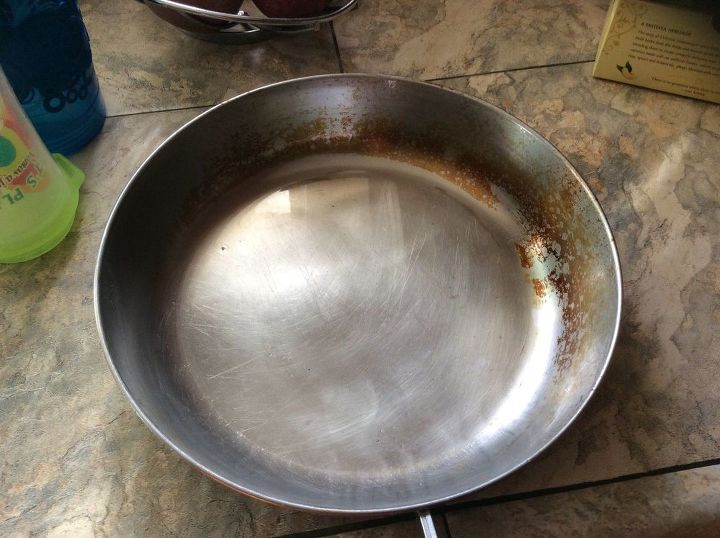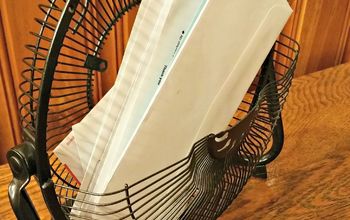How to clean paint brushes with paint thinner?

How to clean paint brushes with paint thinner?
Related Discussions
How to clean a mirror without streaks?
Every time I clean my mirrors, they end up having tons of streaks and almost look worse than before I started. What could I use to clean them that won't leave streaks... See more
How to clean burns on stainless steel pans?
Help! I burned my pan. How do I clean stainless steel cookware that's been burned?
How to clean shower doors
How to clean glass shower doors
How to clean hardwood floors in the kitchen?
What is the best way to clean hardwood floors in the kitchen?
How to clean my kitchen cabinets from grease?
My kitchen cabinets are embarrassingly greasy. Please share your degreasing tips with me so I don't have to cringe every time I glance at my cabinets.
Does cleaning with TSP damage stain and paint?
I'm deciding what to do with my oak cabinets but u til I commit, they just need a good cleaning - previous owners never touched them. Can I use TSE or will that ruin ... See more
What's the BEST way to clean my paint brushes?
I love to paint! But I always run into the same question as I'm finishing up - what is the best way for how to clean paint brushes? I usually clean them with warm wat... See more



We have used paint thinner to clean brushes that were left and not properly cleaned. I hope this helps!
Soak in paint thinner over night it should loosen the paint up
Acetone or paint thinner. Use a small toothed comb on them too
If it was acrylic paint, you should be able to put it in some more water & clean it up after letting it soak for a while. If it was an oil-based paint, you can try putting the brush in some varsol or paint thinner, but even then, they may not come clean again. Good luck!
Latex,, scrape off as much paint as you can, start rinsing with tap water, can use dish soap, keep rinsing until no more paint comes out, takes awhile. You can use a wire brush if have dried up clumps at base of neck to brush out.
Oil base, do the same except use paint thinner not water.
I only use good brushes for artwork or house painting. You should only be dipping the brush in the paint about a half to an inch. And never, ever, get paint on the ferrule or under it. If you are using the brush right, it shouldn't be hard to clean. You basically use water to clean up latex and paint thinner for oil based paints. Hang your brushes after shaking the excess water out (a quick downward stroke) and the bristles will stay straight. Also, if your paint is too hard to remove you can use a wire paint brush cleaner (sold at Home Depot or paint stores). If you aren't going to take proper care of good brushes, then just buy crappy ones and throw them away. Your project won't turn out the same with crappy brushes, though. You can also use acetone for good brushes that have been left too long with acrylic/latex paint. You have to soak them a little.
Soak the paint brush in paint thinner overnight-the bristles only.
As Elizabeth explained, use only good brushes on the tip, 1/2"-1", no further than than.
The paint thinner breaks apart the oils that cling to the bristles in your paint brush.
Here's a helpful link to explain further:
https://www.seniorcare2share.com/how-to-use-paint-thinner-to-clean-brushes/
Hello generally I use a glass jar with soaking the paint brush will help remove dried crusted paint. Additionally there are some products that are used to help get dried paint out of fabric or clothing.
After cleaning store in your paint brushes in the proprietary cardboard wrap can be helpful to protect and maintain your bristles longevity
Paint thinner is useful for oil based paints and stains. Not too helpful for latex.
here is some info to help you out
https://www.bobvila.com/articles/2156-how-to-clean-paint-brushes/
https://www.youtube.com/watch?v=Vjx0vSx80W8
Paint thinner for oil based paint. Water and liquid dish soap for latex paint or soak in hot vinegar.
Yes, if it's oil-based paint or stain. It's best to soak them before they dry.
Paint thinner is only for oil-based paints, and with the excellent quality of latex paints these days you should be able to do most painting jobs with latex... which comes clean with just soap and water. I do a lot of painting and haven't used oil in years.
Hi Abby, use paint thinner to clean oil paint. Pour some thinners in a glass jar and leave the brushes to soak for a few minutes. Whoosh them around and wipe them off with a kitchen towel. Repeat until they're clean. Please dispose the paint thinners safely - https://www.bobvila.com/articles/how-to-dispose-of-paint-thinner/#:~:text=It's%20not%20dangerous%20to%20throw,event%20(see%20Step%203).
Use it overnight to let the paint soak off
Yes paint thinner will definitely work to clean paint brushes. A painting hack that we always use, because it is so much easier - after we use the brush, put it in a plastic bag (fold it up around the brush so it's airtight). Then keep it in the fridge. This way when we do another coat (or another wall) we just pull it out of the bag and start painting again.
We use it to clean oil based paints and oil based stains. We put the brushes in a ziploc bag.
Work thinner through the brush bristles, dipping up and down in container several times. Spin the paint brush into a waste area to remove excess thinner and then repeat process with a clean container and clean thinner.
Yes - if you get terpentine - a paint thinner, it thins the paint so you can more easily rinse out the paint with water (even though terpentine and water dont' mix). So if you are using oil based paint, the only way to rinse our those brushes to to use an oil based solvent like terpentine that will help pull the paint out of the brushes. If you are using acrylic paint, as long as the paint doesn't dry, you can use just water to clean the brushes.
You wash them with it and you can also soak for a short period of time. I use vinegar to clean my paint brushes for a soak when they get stiff.
What kind of paint is on there? Is it dried or still wet? If it's latex or acrylic and still wet, soap and water cleans them up. If it's dried, The Masters Brush Cleaner is what I use. Paint thinner is good for oil type paints, let it soak a bit and use a stiff brush. Don't pour the thinner down the sink.
Yes! Just allow you brushes to soak in paint thinner over night.
Hi Abby, hope this helps you out,
https://www.youtube.com/watch?v=TaeO6-a2Lug
Remove as much paint as possible , then steep in pain brush cleaner and leave.
Soak them in it in jam Jar.
Add paint thinner to a recycled plastic container that the brush will fit into and submerge the bristles of the paint brush in the thinner and let soak for 20-30 minutes.
I soak the bristles only in an old can to remove the paint.
Soak them but make sure they are suspended and not resting on the bottom of the container where you have the thinner.
You can also bring them back to life with white vinegar.
Use and old jar like a peanut butter jar. Use what is called Brush Cleaner. Fill to the depth of the brush bristles and let them soak for a while. I take mine out after about 30 minutes and wash with dish soap and rinse well and hang to dry.
Hello Abby: What I do is I save a glass jar, like from pickles or such, with a wide mouth, and put enough paint thinner in so that it covers the brush and part of the metal part where the bristles go into the handle. It's called the ferrule :) Then, I put my brush inside and let it sit for a few minutes and then squish it around until the brush is clean. If the paint is hard, you can soak in vinegar. Here's a neat site that may help: https://www.homedepot.com/c/ah/how-to-clean-paint-brushes/9ba683603be9fa5395fab901f586e73a
Happy painting :)
I pour paint thinner in an aluminum can and then soak the bristles of the brush in it.
I use Brush Cleaner sold in the paint section. Pour some in an old peanut butter jar or similar size jar and put the brushes in enough to cover the bristles. Let soak for a while stirring them around a few times. Wash with dish soap and water, shake out water outside and stand on the handle to dry. Hang when done or store in container with the bristles up.
To get the paint off, your brushes. Use downy detergent that you wash clothes with. Soak Them for a couple hours and they Well come clean Lake new
Hi Abby: What I do is to fill a jar with paint thinner, up to the area where the ferrule, the metal bit that the bristles go into, is, maybe mid-way up the ferrule, so that all of the bristles get covered with thinner. Let it sit overnight, giving it a stir every now and again, and in the morning, squish the brush around the jar and let the thinner drip off. Then, wash the brush in warm soapy water. That should do it.
This might help! https://www.youtube.com/watch?v=TaeO6-a2Lug